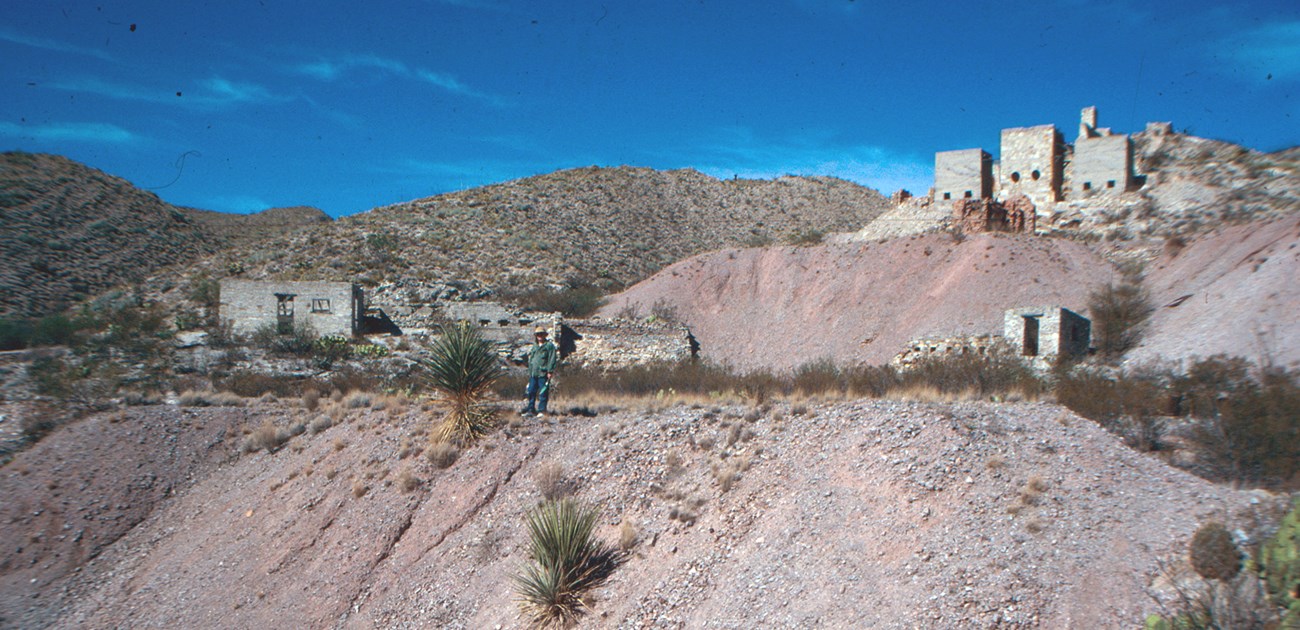
NPS photo.
Introduction
Remediation of safety and environmental issues at abandoned mineral lands is an expensive and important land management issue. The National Park Service is committed to maintaining a comprehensive, nationwide inventory of abandoned mineral lands, and works with other agencies to address the multitude of safety, environmental, and cultural issues raised by AML sites. The Service supports legislative efforts to create a hardrock mine reclamation fund similar to that created under the Surface Mine Control and Reclamation Act of 1977, which provides money for reclamation of coal mines.
AML Program Activities
-
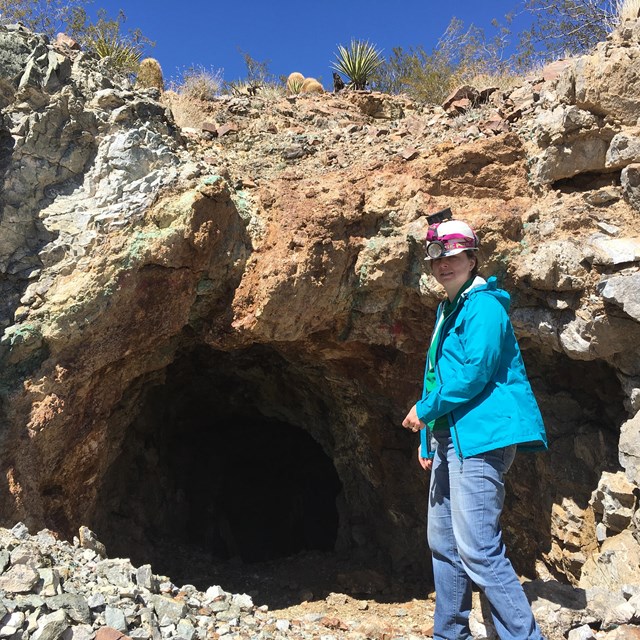 2013 Inventory Project
2013 Inventory ProjectConducting boots-on-the-ground inventories
-
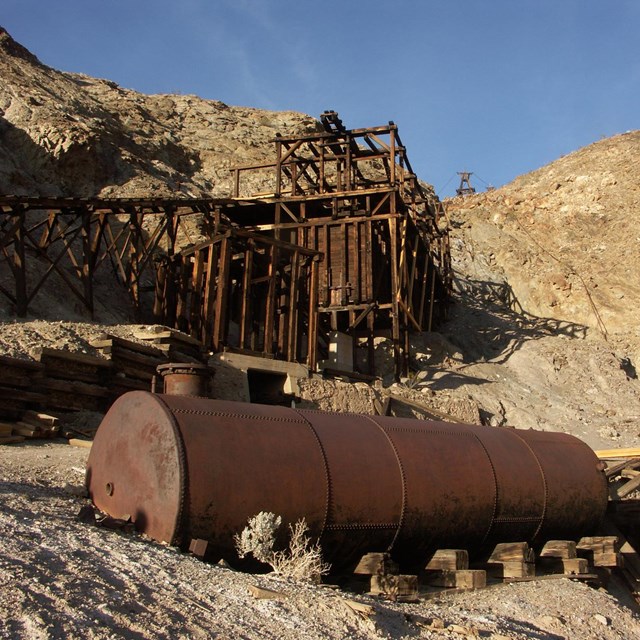 Cultural Resources
Cultural ResourcesMany parks boast rich mining histories, structures, and landscape
-
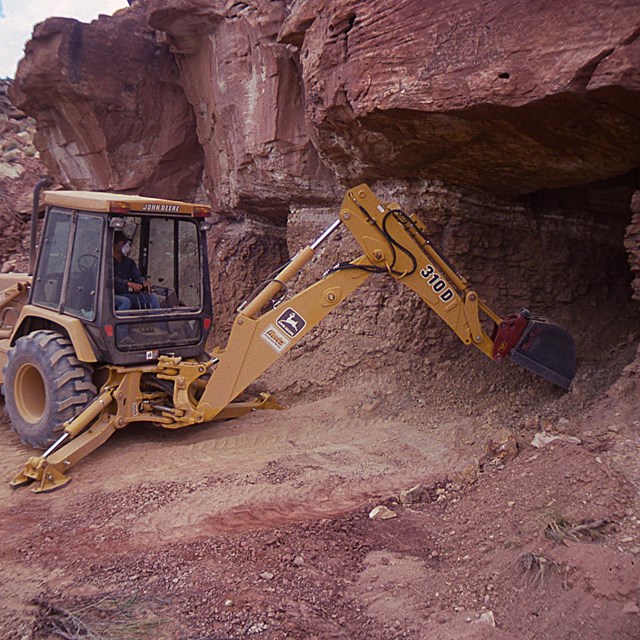 Mine Closures
Mine ClosuresClosing mines to keep people safe
-
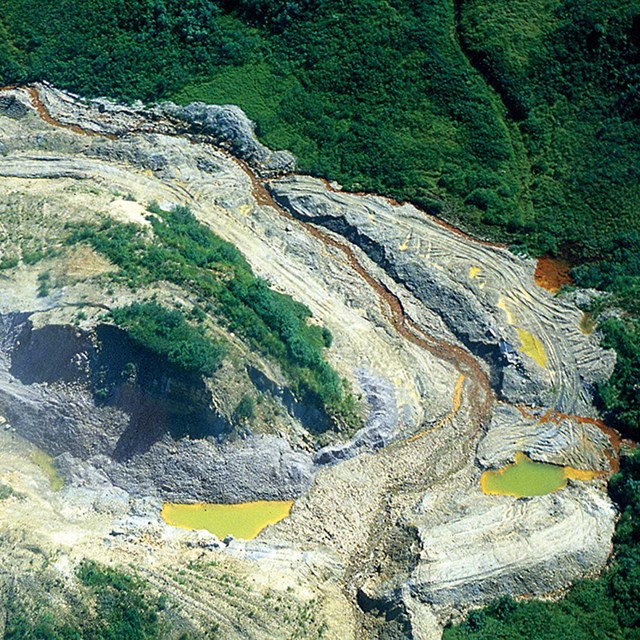 Hazards Mitigation
Hazards MitigationFinding solutions for pollution and hazards
-
 Wildlife Habitat
Wildlife HabitatMaintenance of critical wildlife habitat for species of concern
-
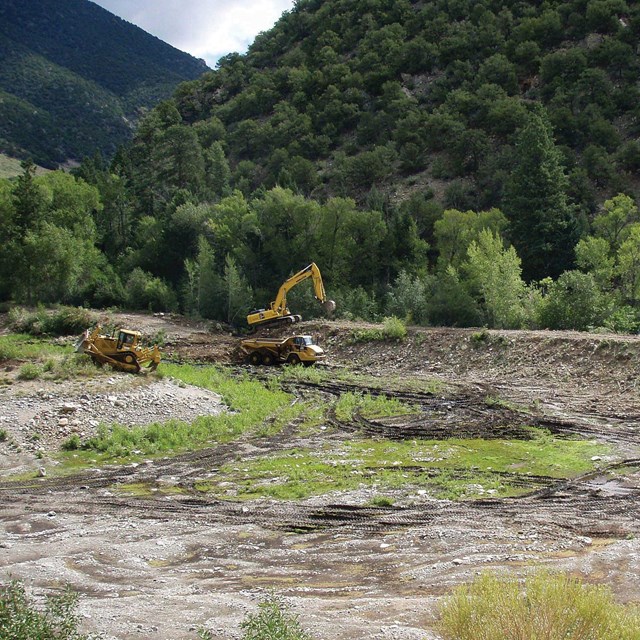 Reclamation and Restoration
Reclamation and RestorationTaking steps to restore natural systems
-
 Education and Interpretation
Education and InterpretationEducators have recognized that parks make excellent classrooms for mining-related topics
Volunteer and Cooperative Projects
Each year, national parks benefit from the hard work of thousands of volunteers. Volunteers assist with the inventory of abandoned mines and wells, construction of mine closures, and revegetation of mine sites. Without volunteers, the National Park Service could not afford the labor-intensive projects. Often, the National Park Service uses outside specialists to conduct scientific research for restoration projects. The service established cooperative agreements with several other federal agencies, state agencies, and universities for the study environmental impairments in abandoned mineral land sites in park units.
Related Links
Last updated: January 12, 2023
